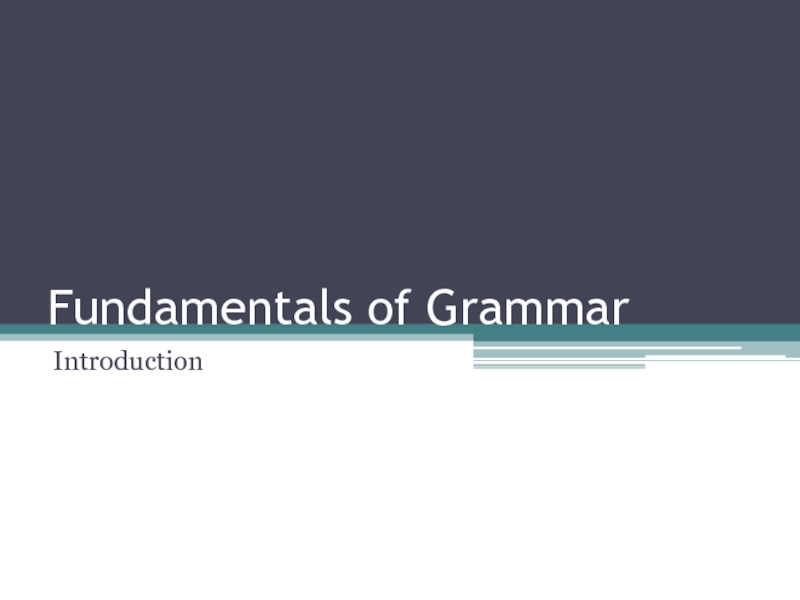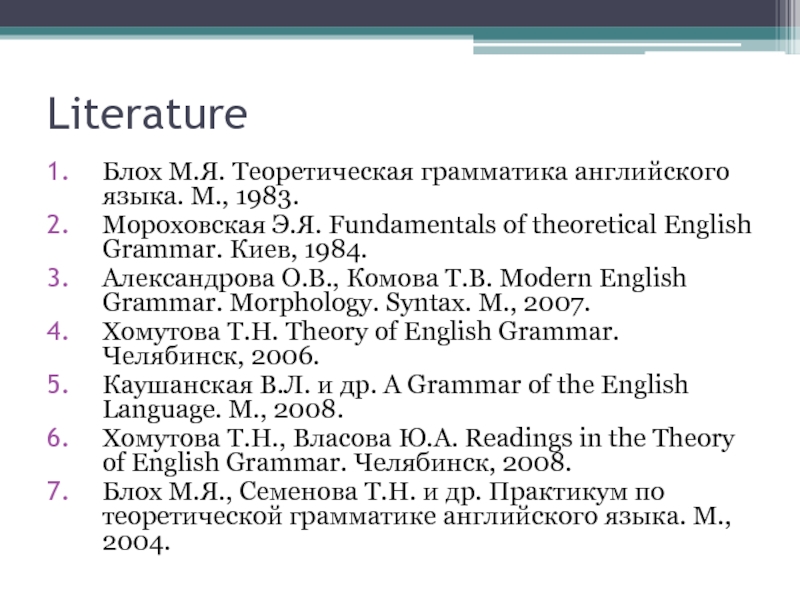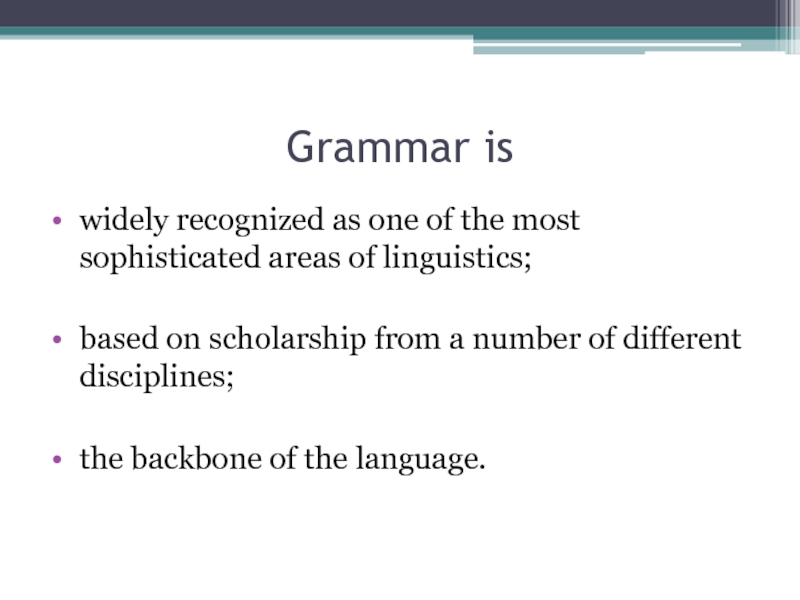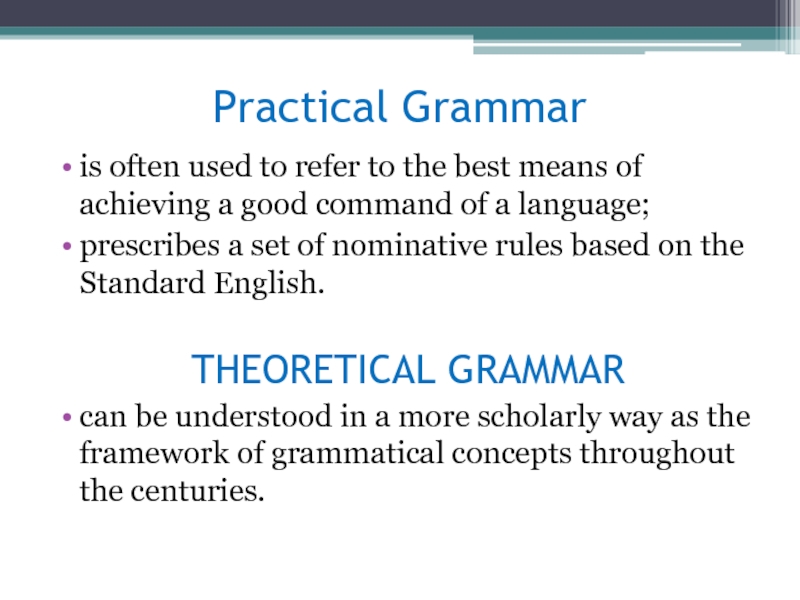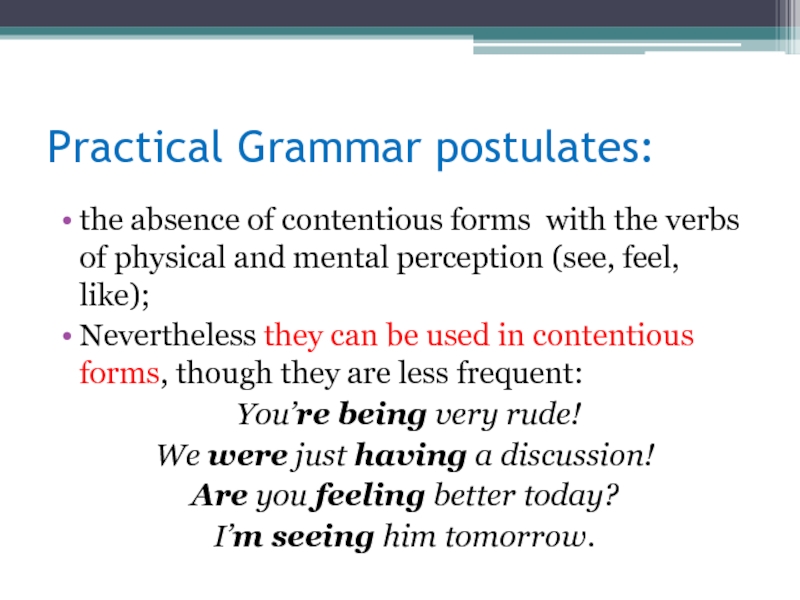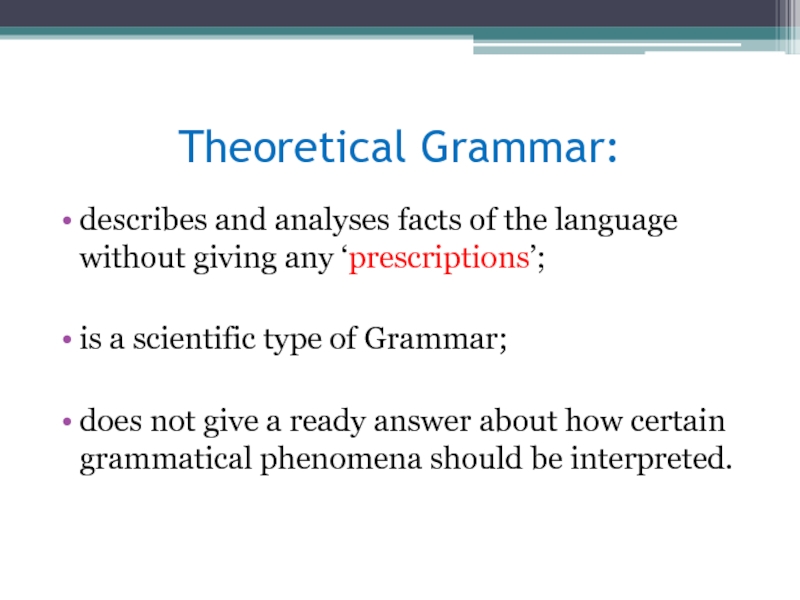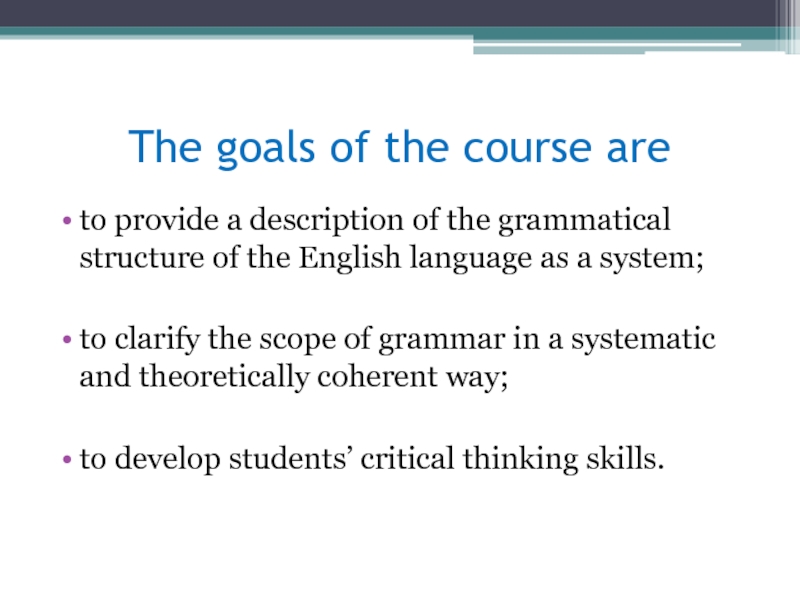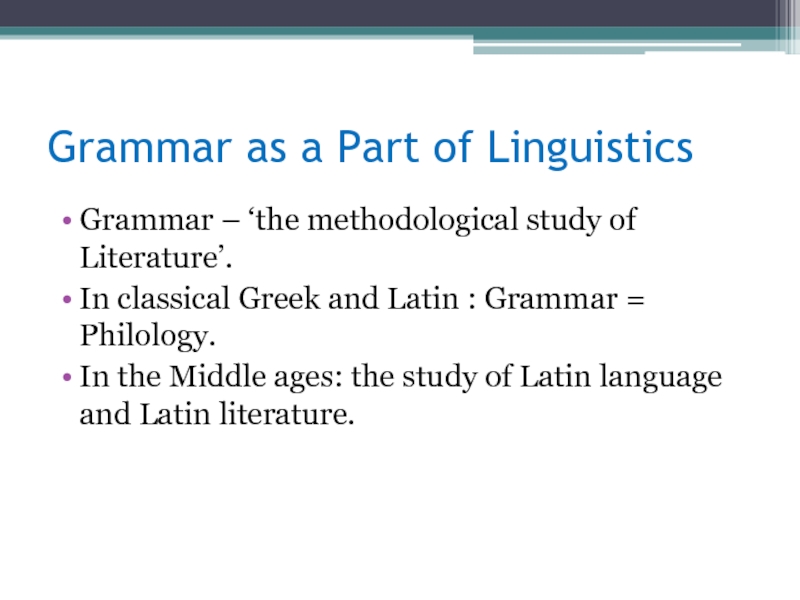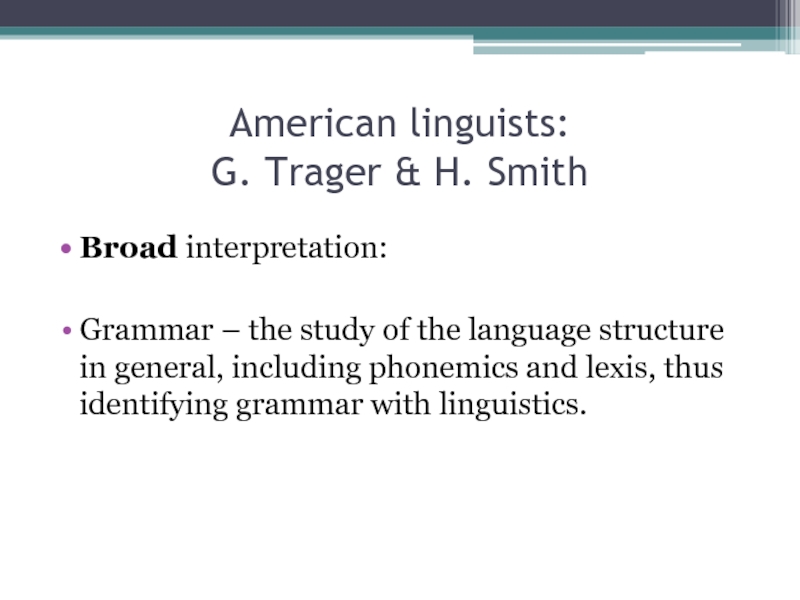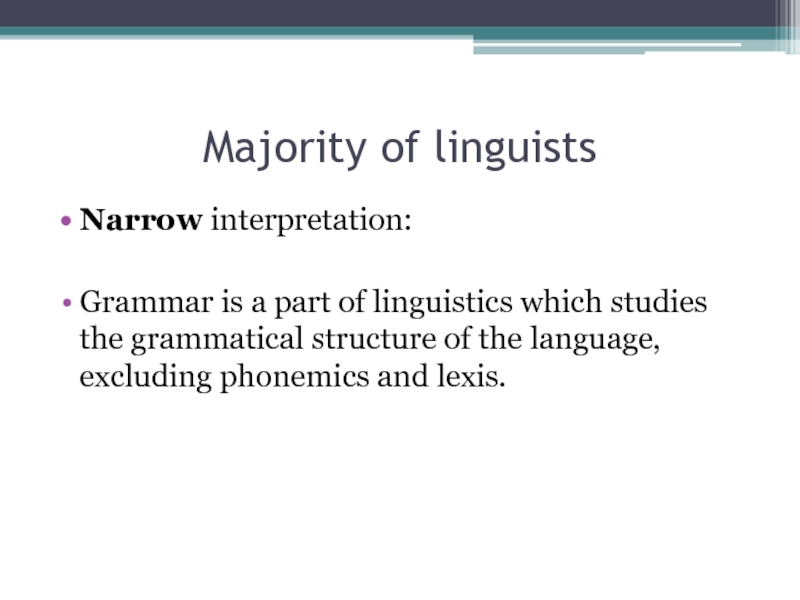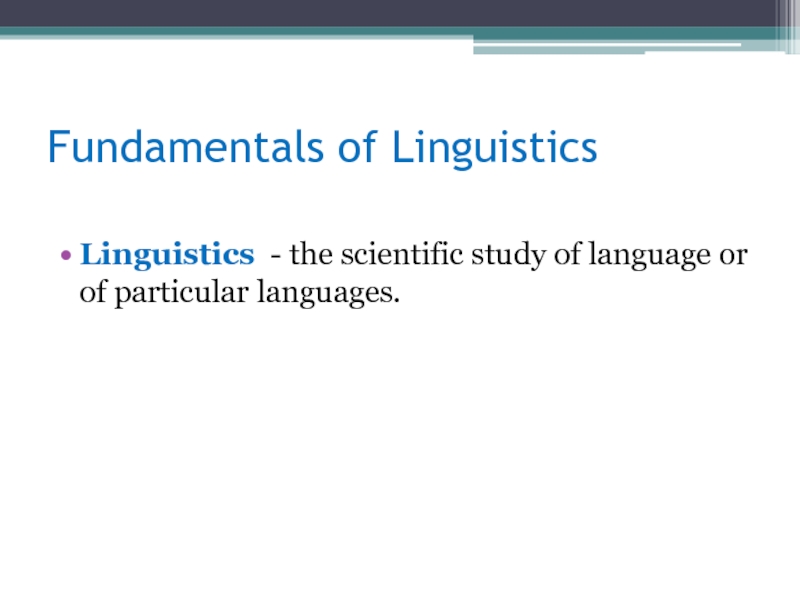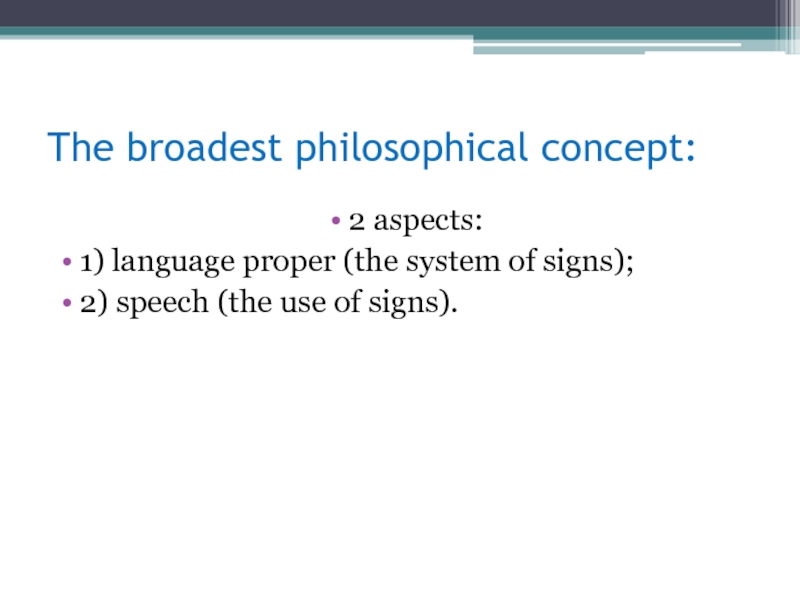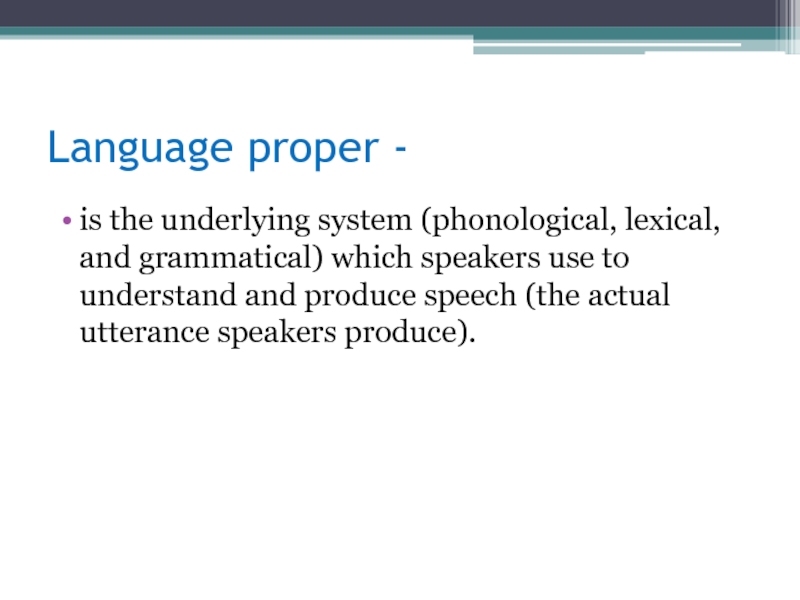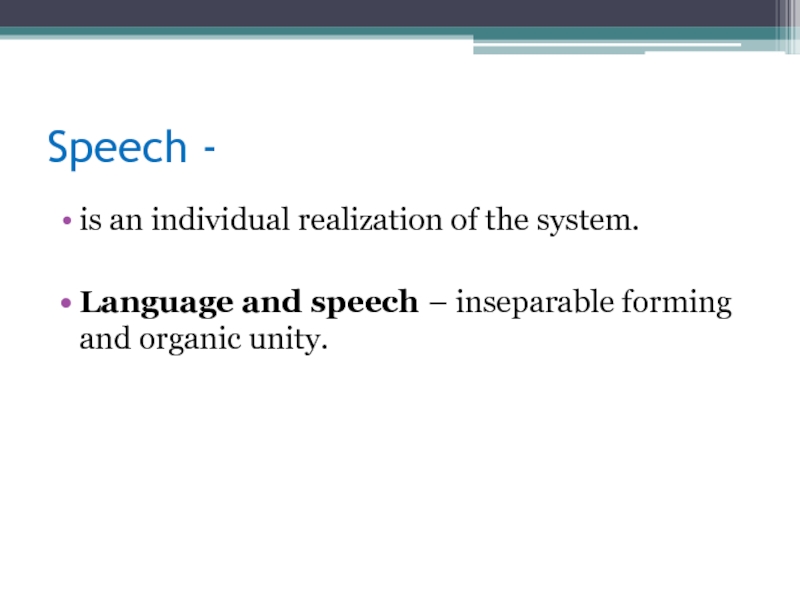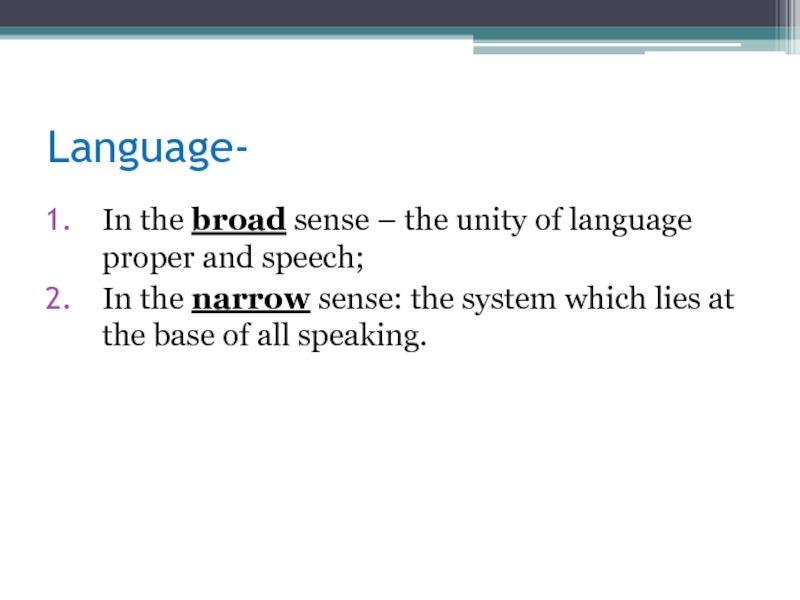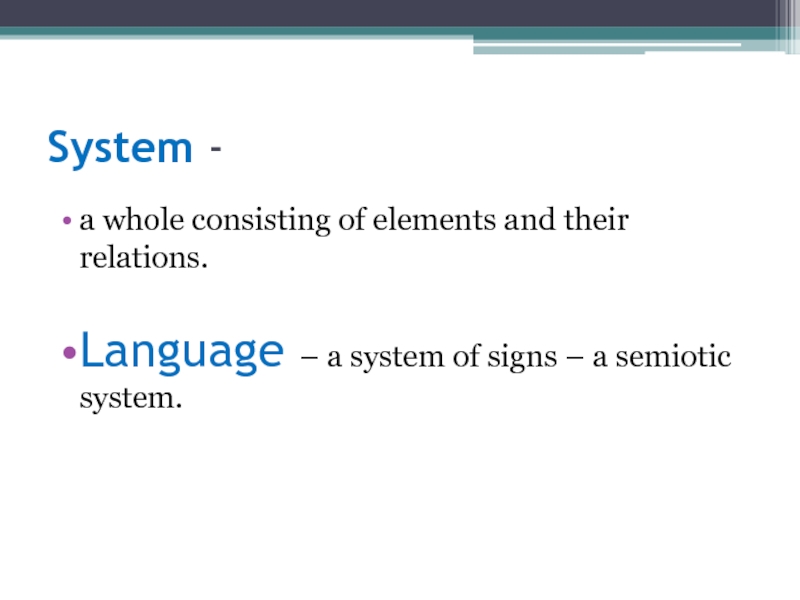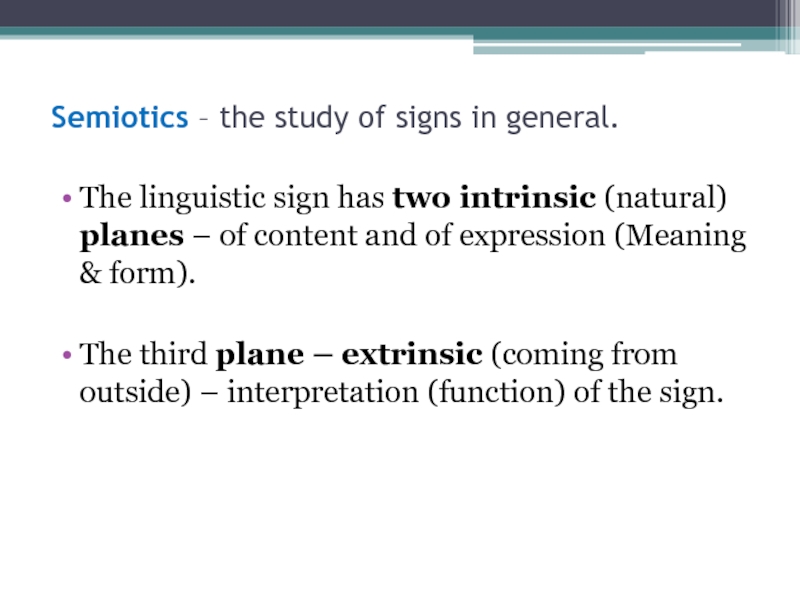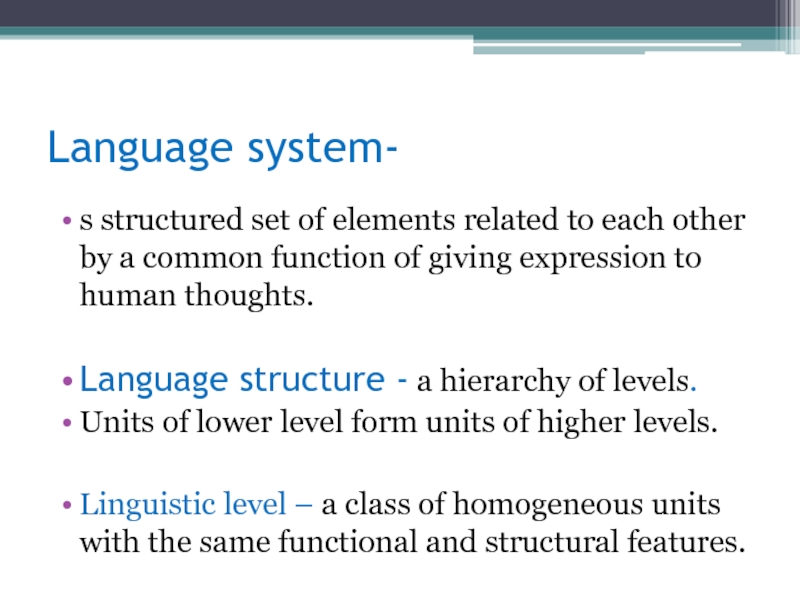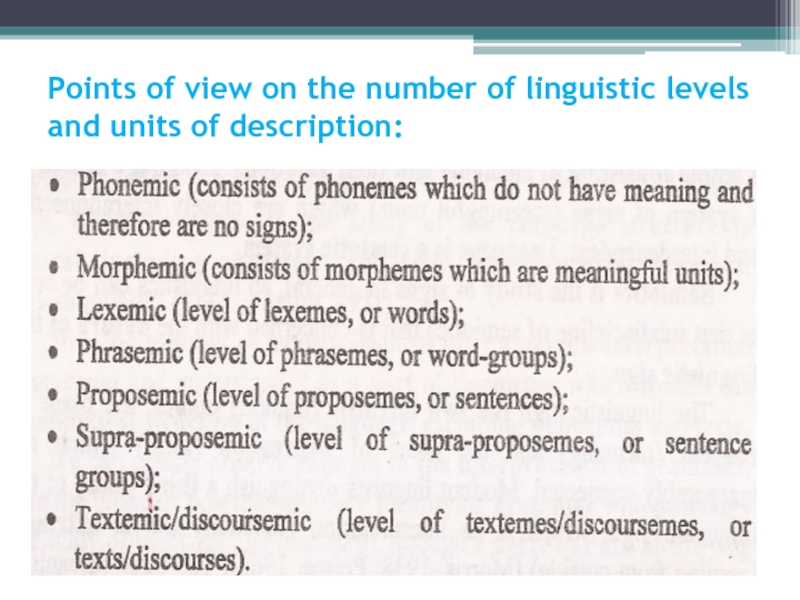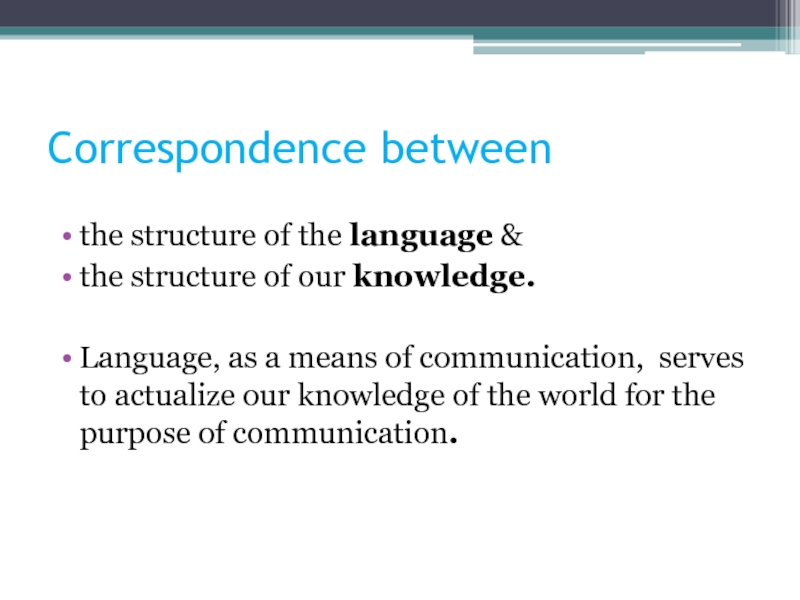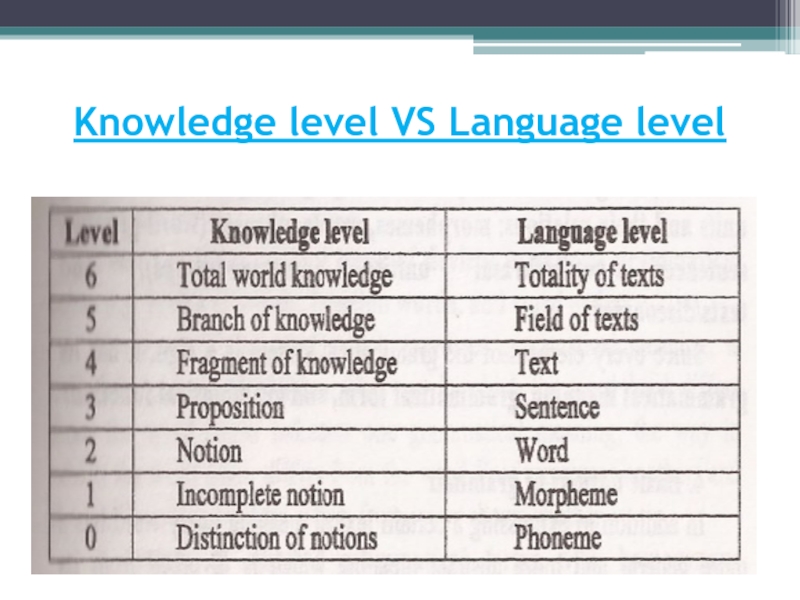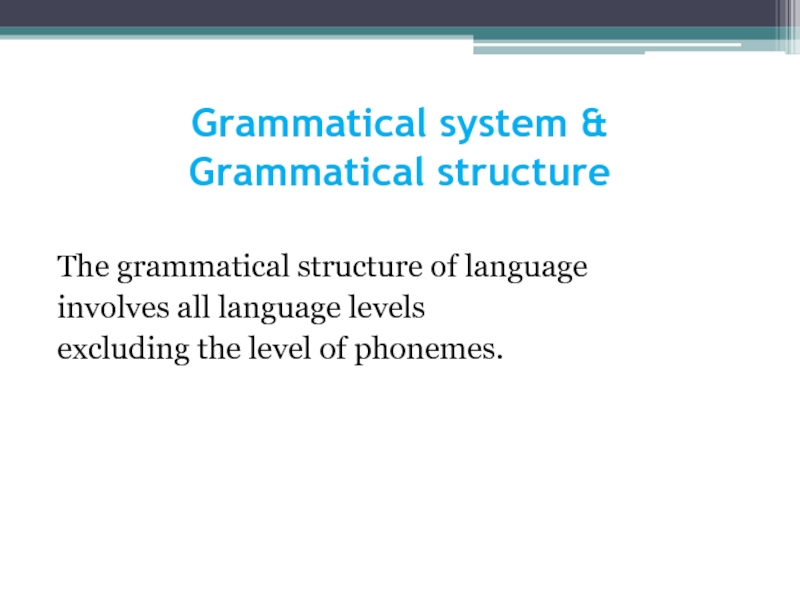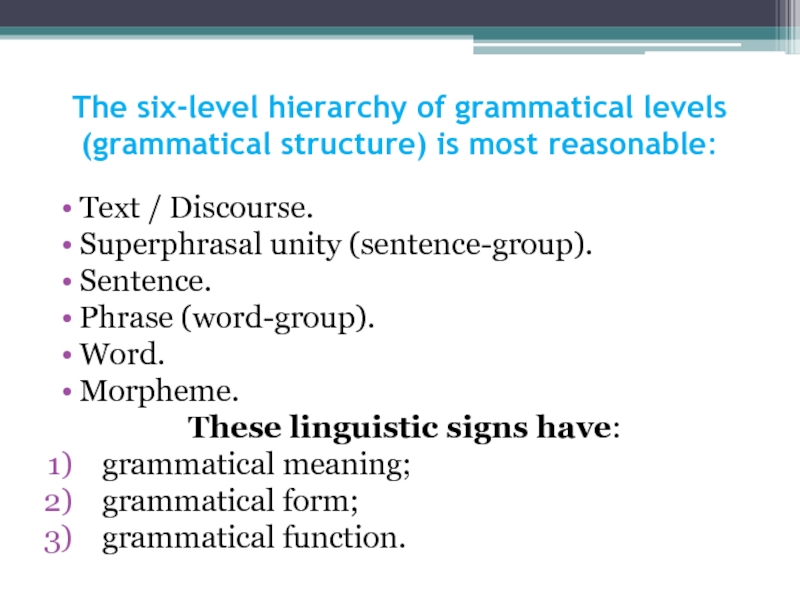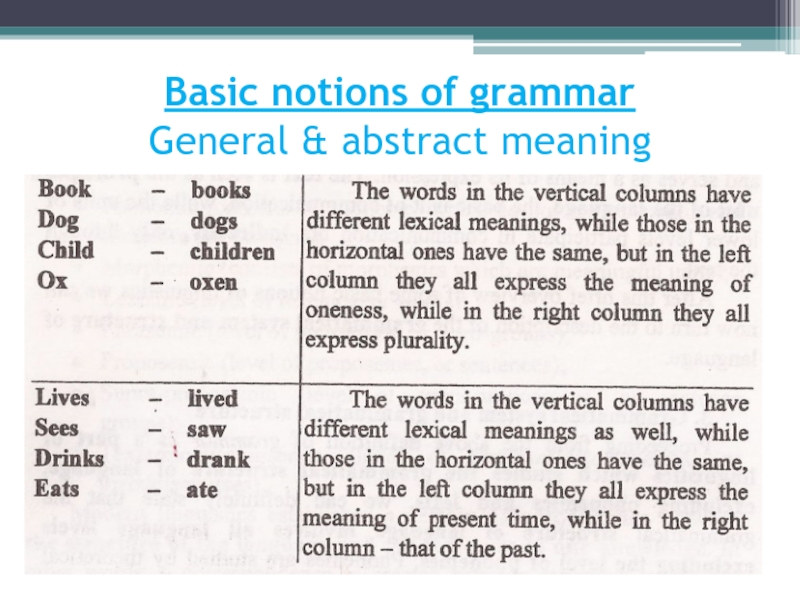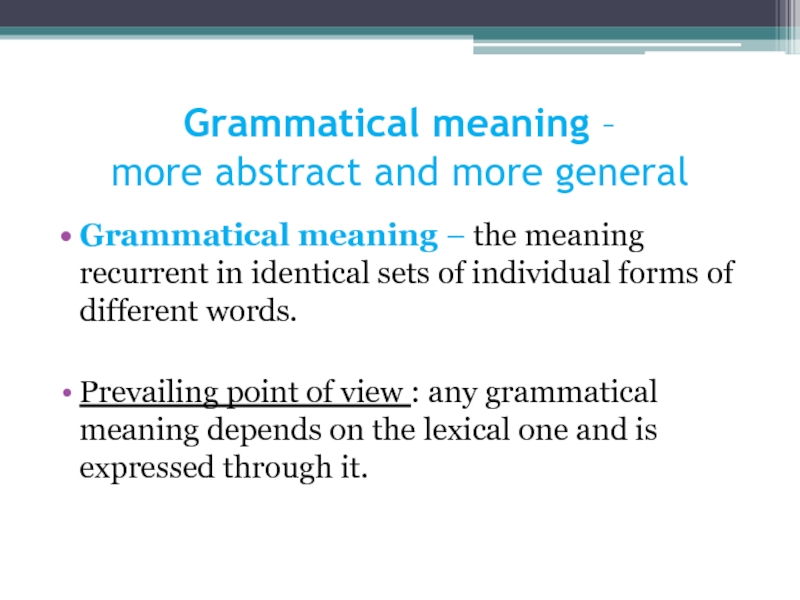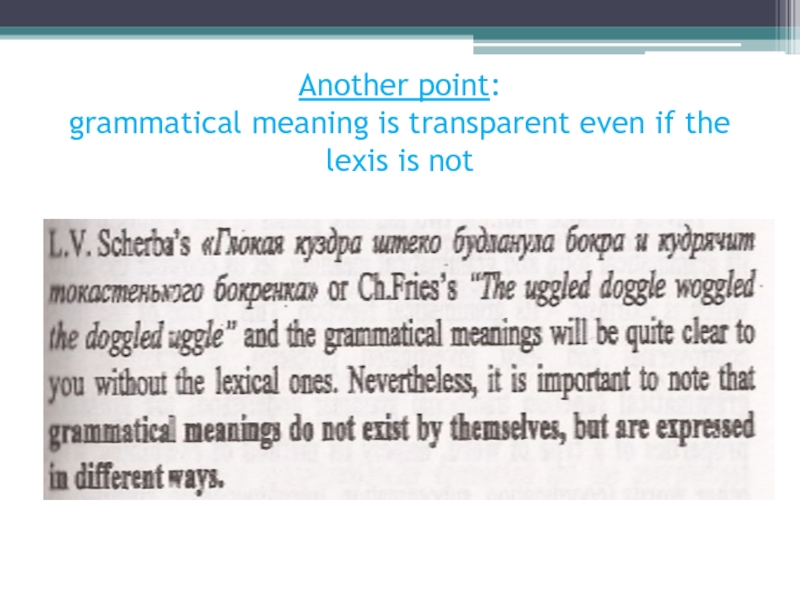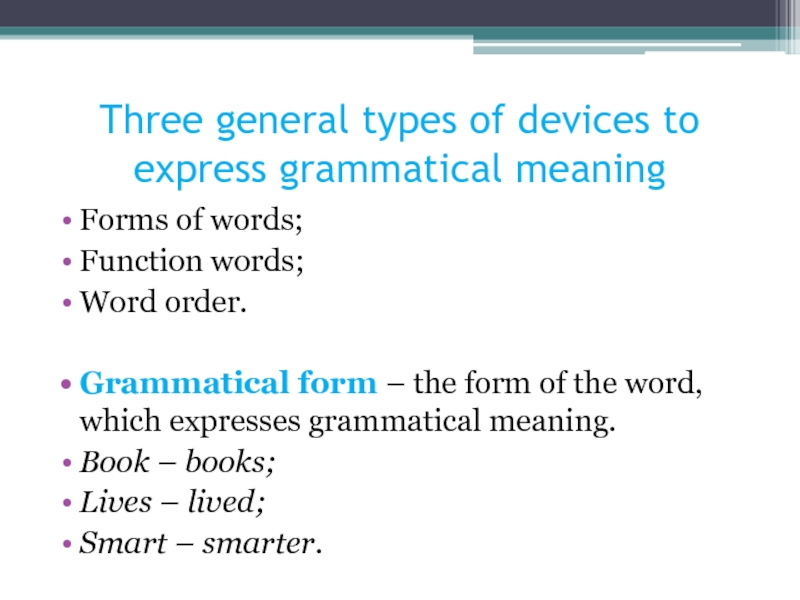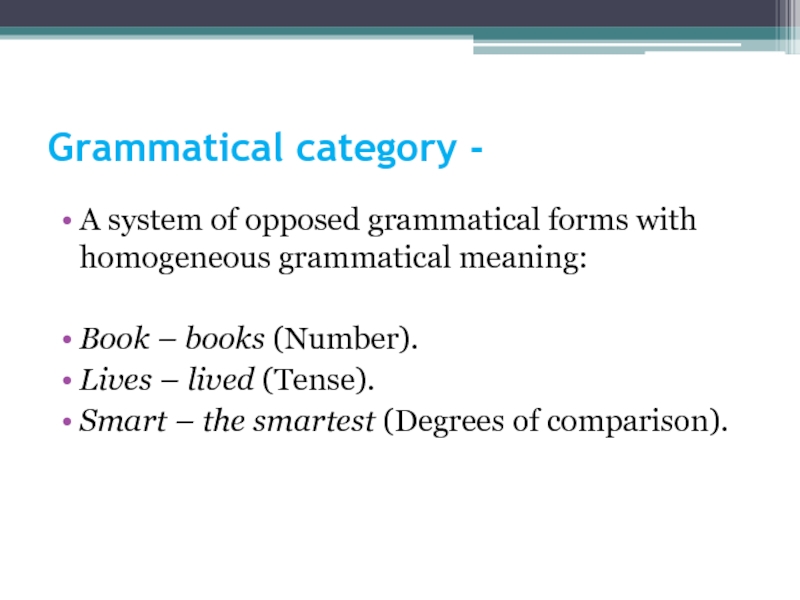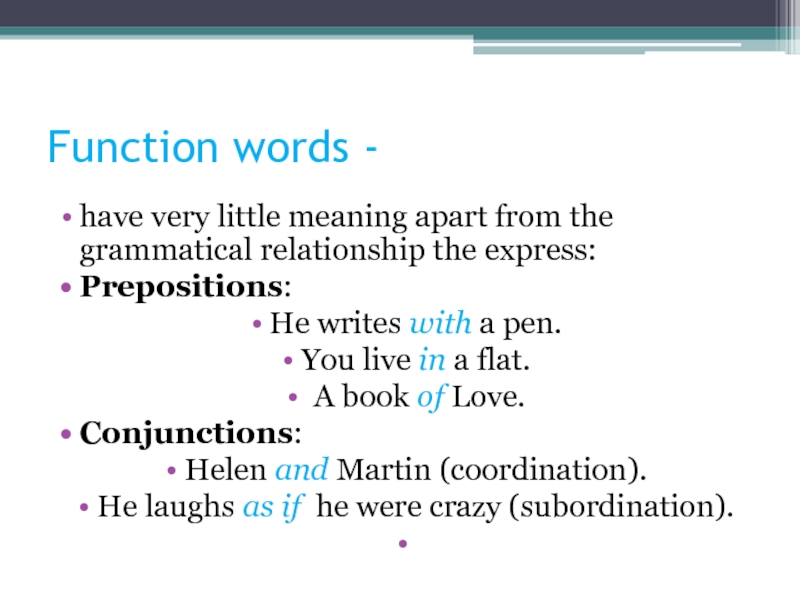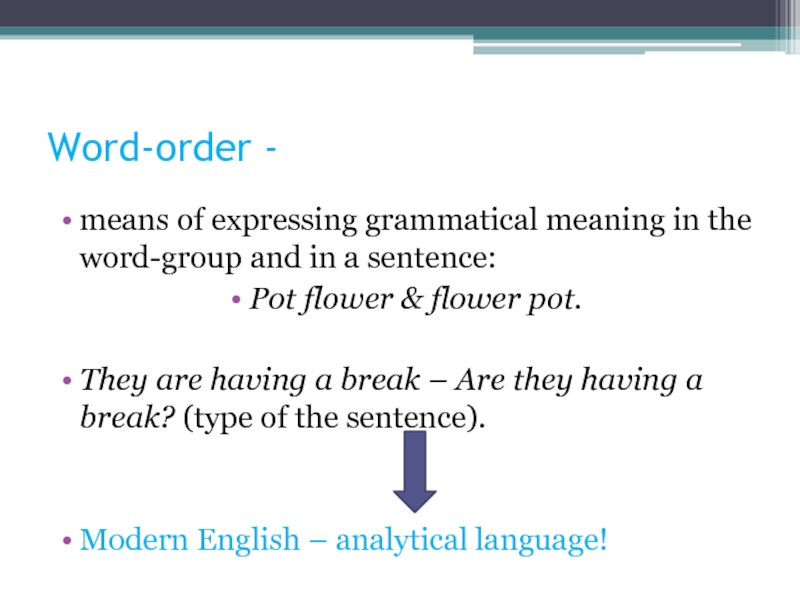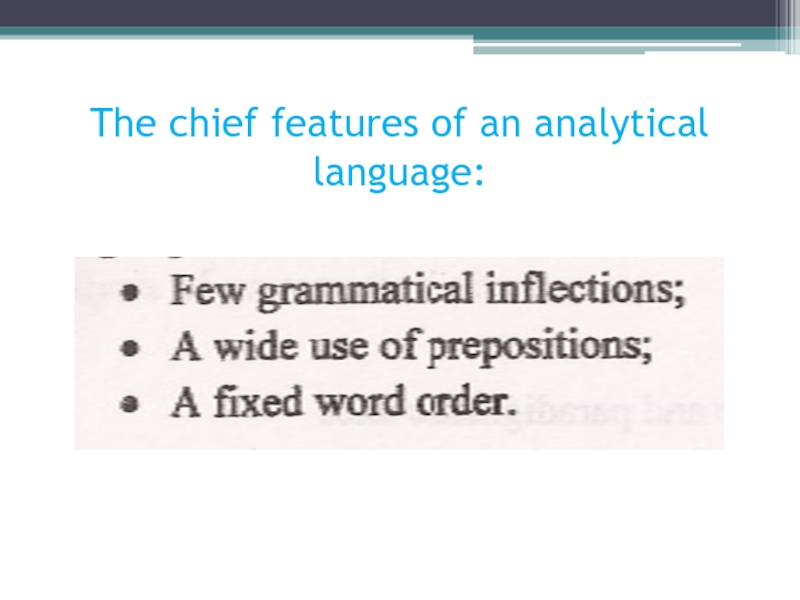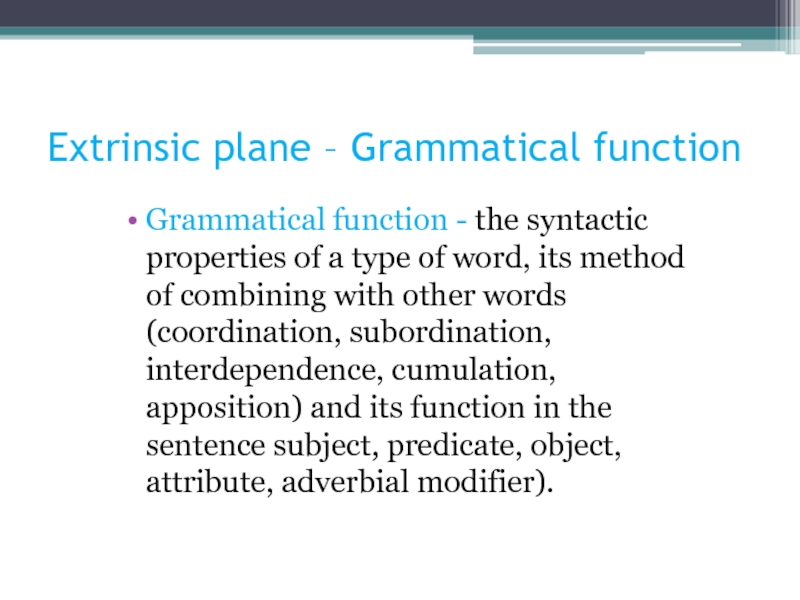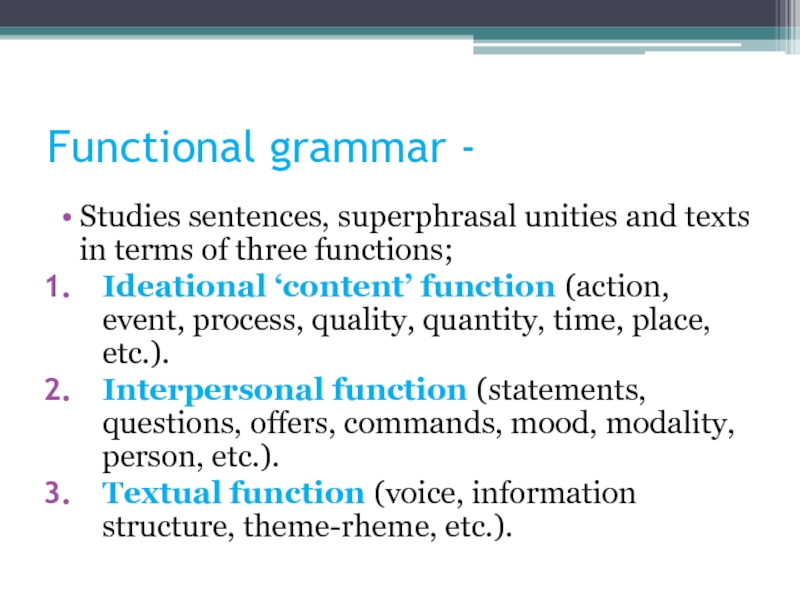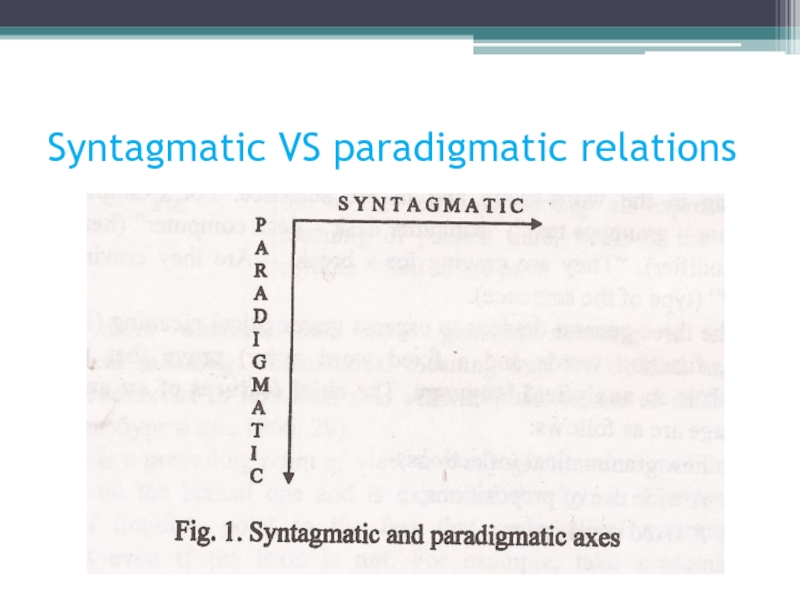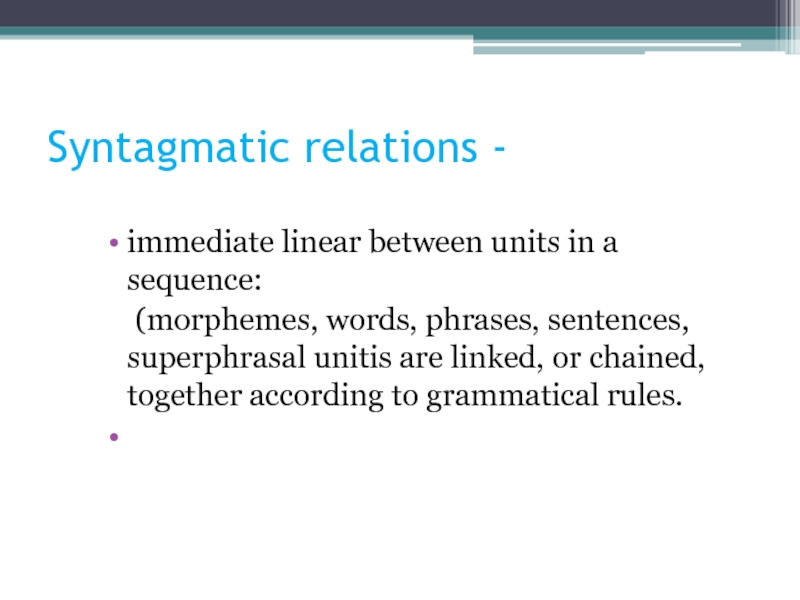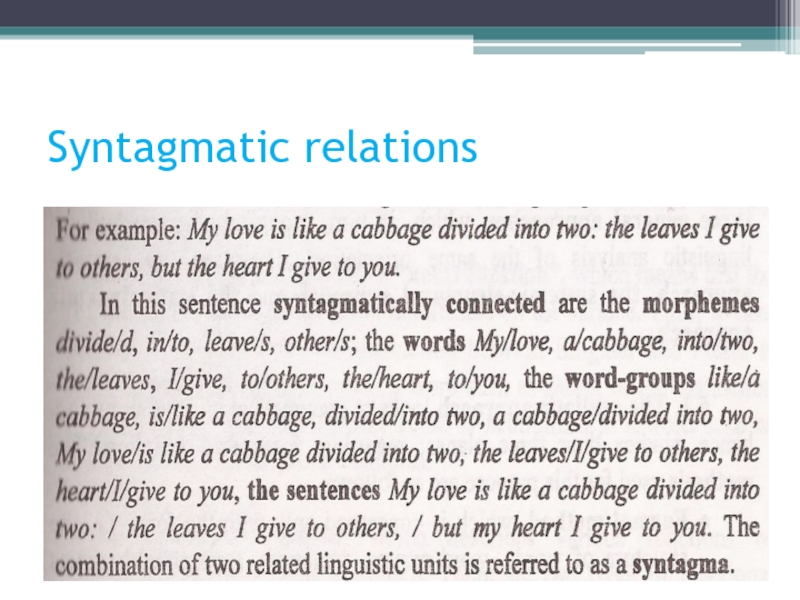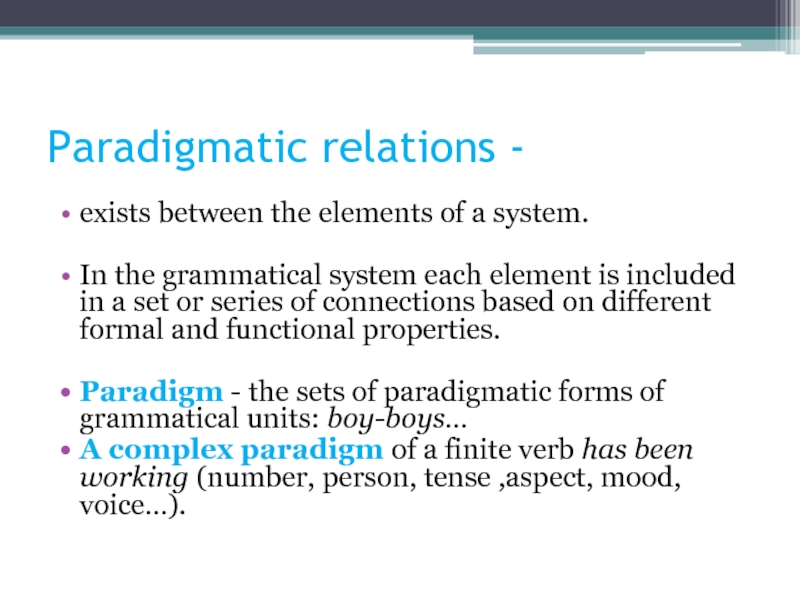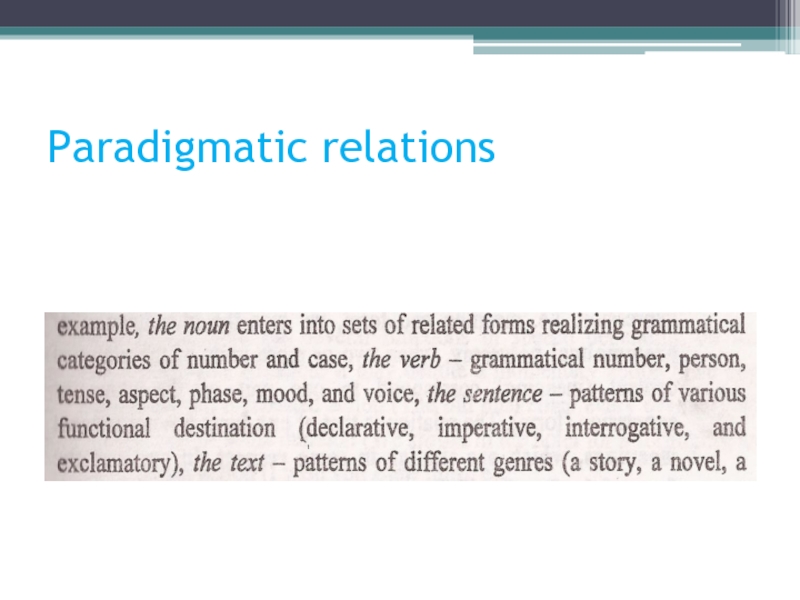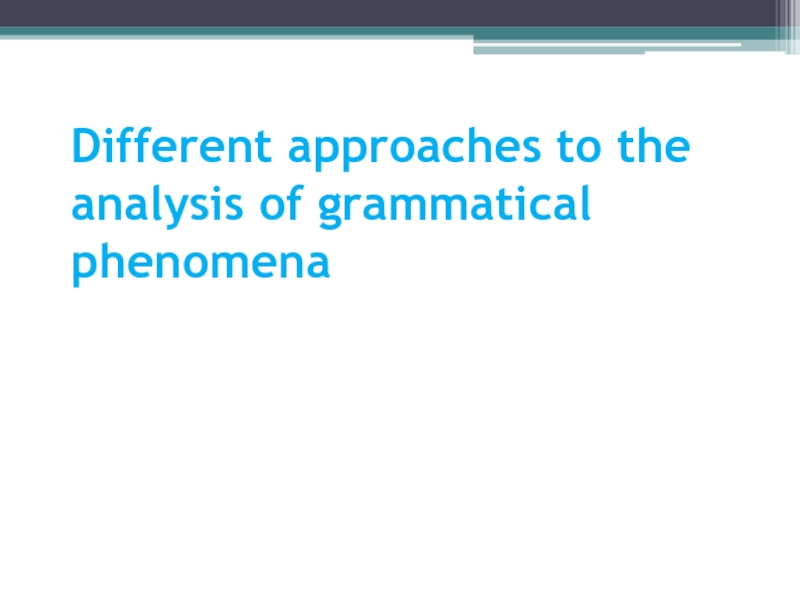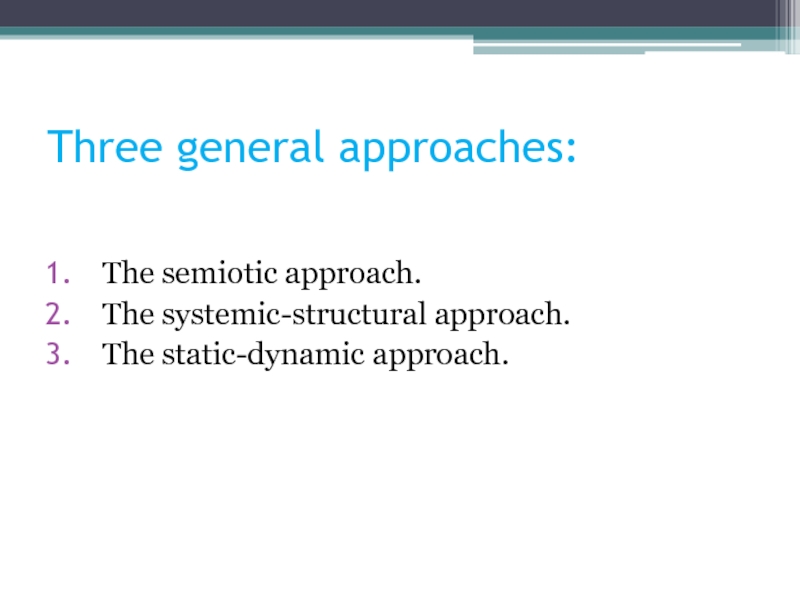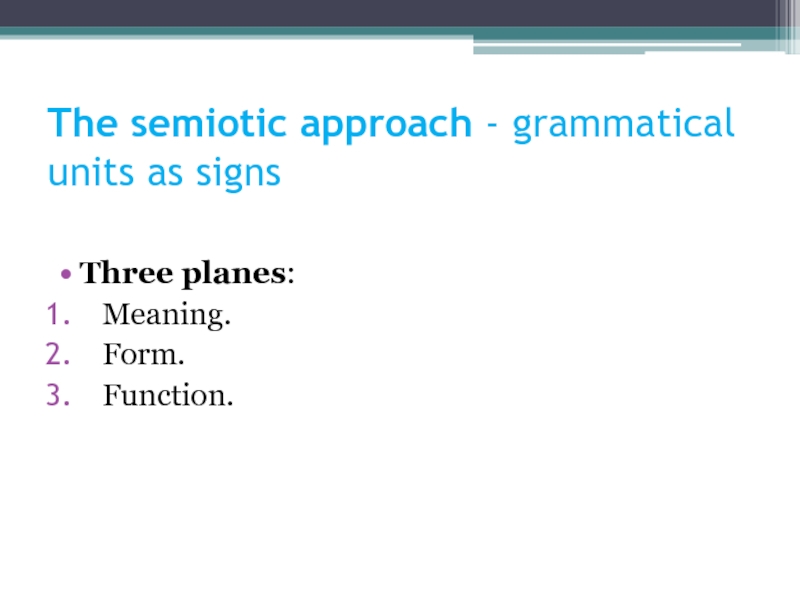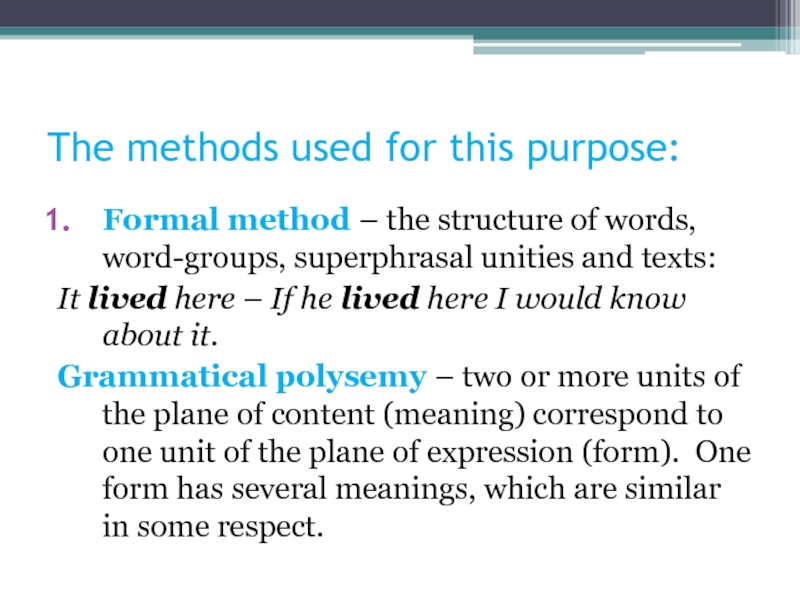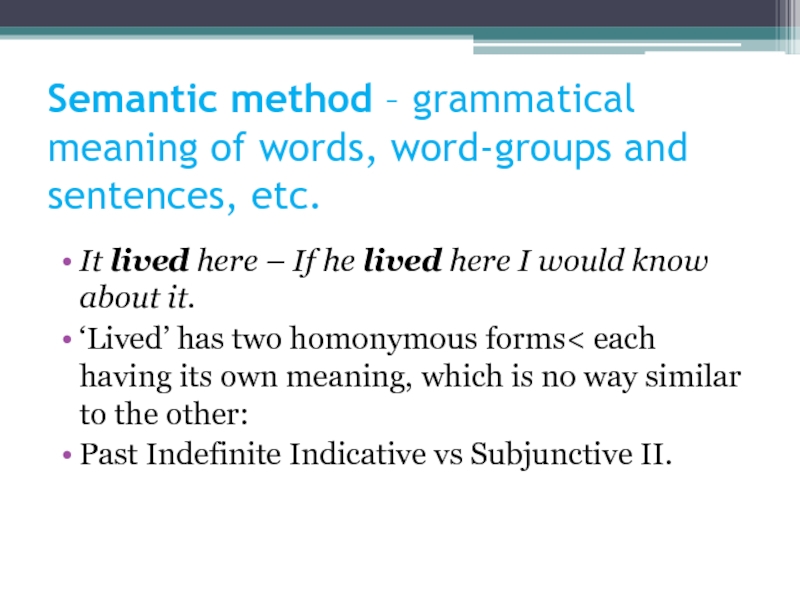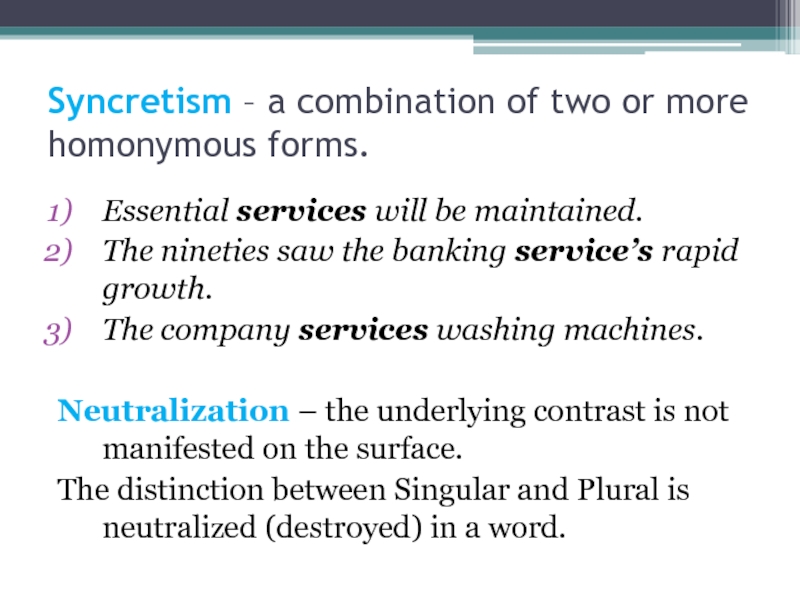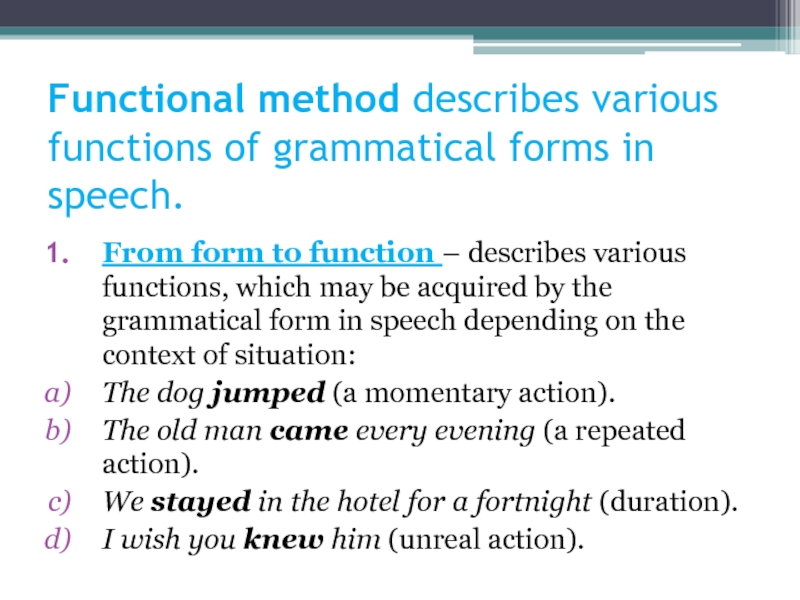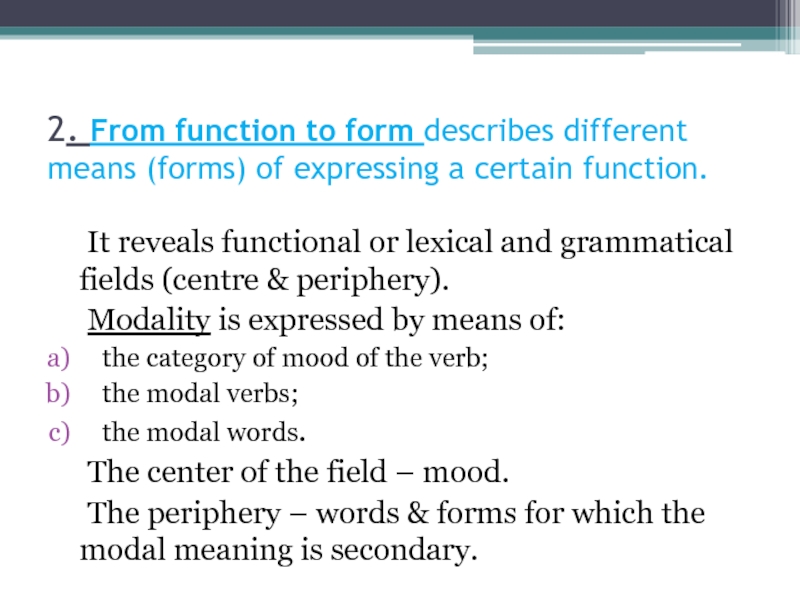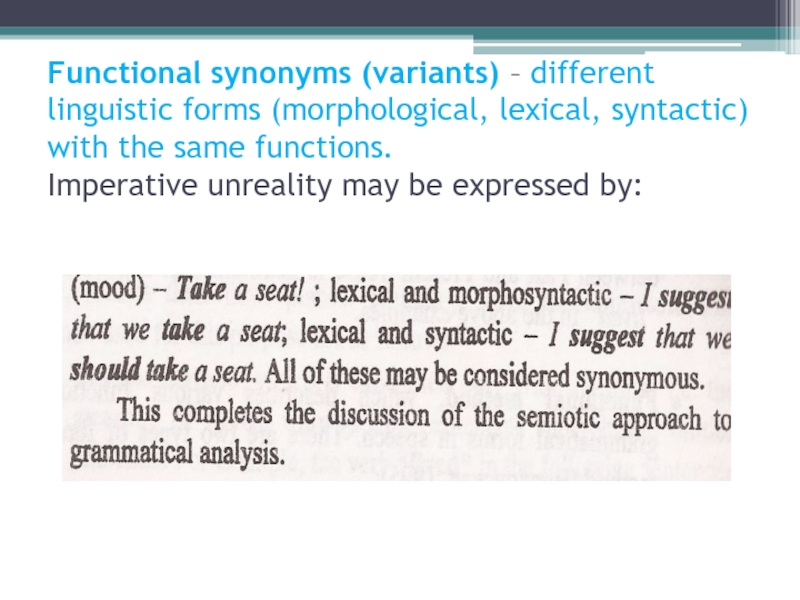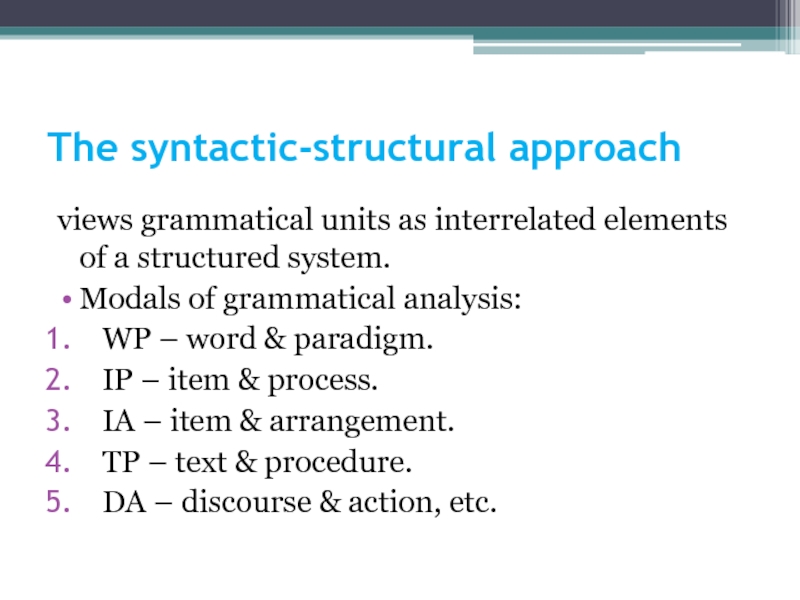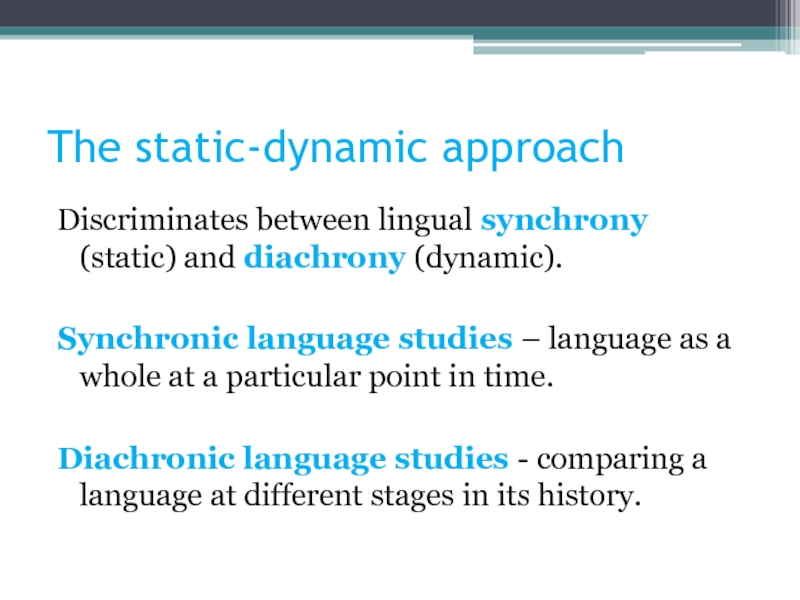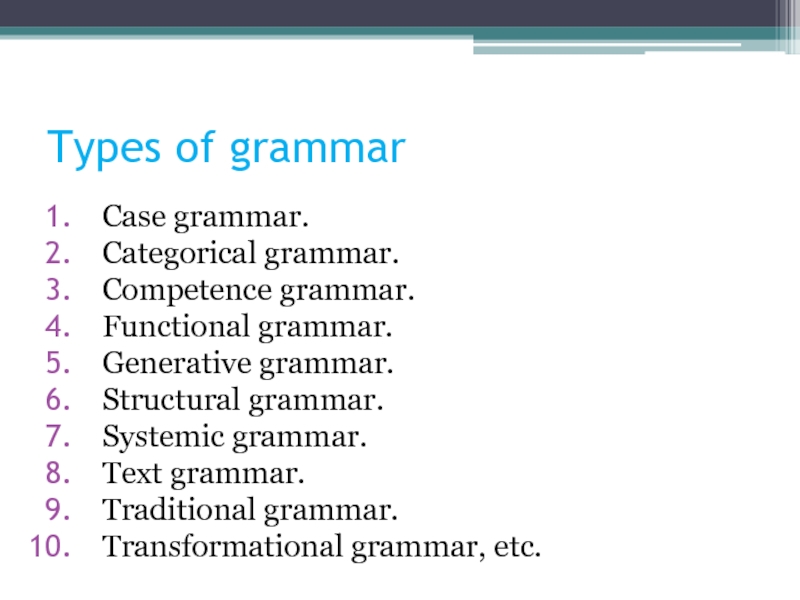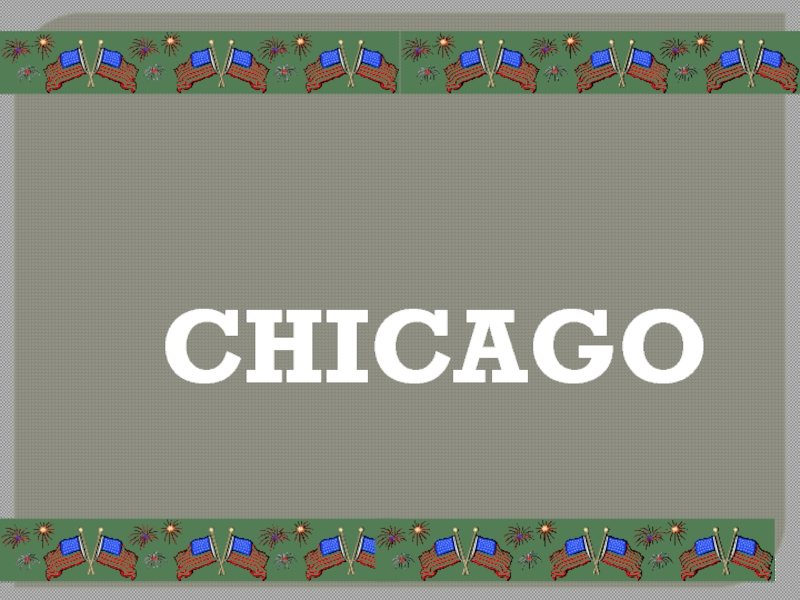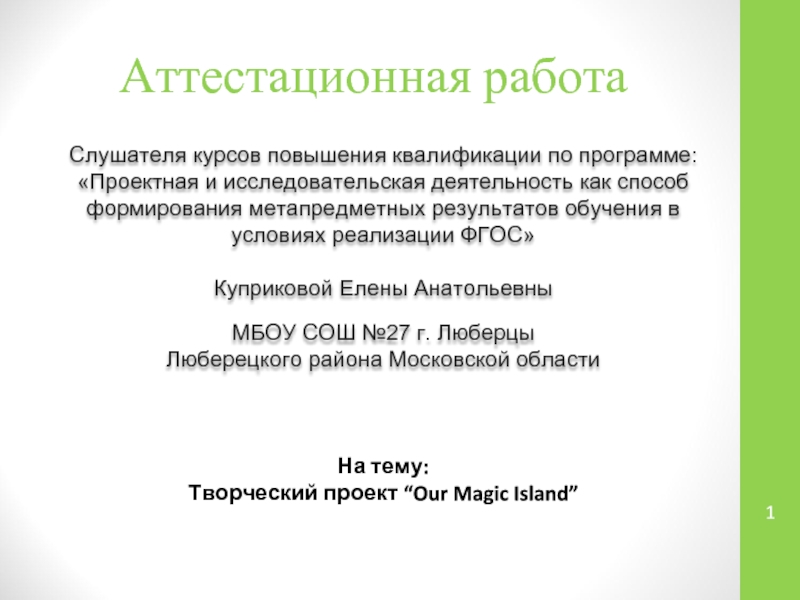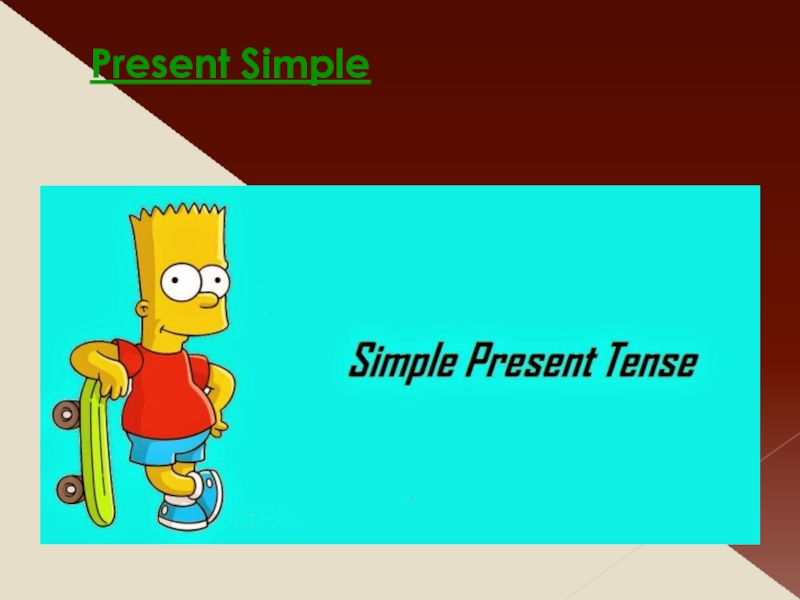- Главная
- Разное
- Дизайн
- Бизнес и предпринимательство
- Аналитика
- Образование
- Развлечения
- Красота и здоровье
- Финансы
- Государство
- Путешествия
- Спорт
- Недвижимость
- Армия
- Графика
- Культурология
- Еда и кулинария
- Лингвистика
- Английский язык
- Астрономия
- Алгебра
- Биология
- География
- Детские презентации
- Информатика
- История
- Литература
- Маркетинг
- Математика
- Медицина
- Менеджмент
- Музыка
- МХК
- Немецкий язык
- ОБЖ
- Обществознание
- Окружающий мир
- Педагогика
- Русский язык
- Технология
- Физика
- Философия
- Химия
- Шаблоны, картинки для презентаций
- Экология
- Экономика
- Юриспруденция
Fundamentals of Grammar. Introduction презентация
Содержание
- 1. Fundamentals of Grammar. Introduction
- 2. Literature Блох М.Я. Теоретическая грамматика английского языка.
- 3. Grammar is widely recognized as one of
- 4. Practical Grammar is often used to refer
- 5. Practical Grammar postulates: the absence of contentious
- 6. Theoretical Grammar: describes and analyses facts of
- 7. The goals of the course are to
- 8. Fundamentals of Grammar Part 1.
- 9. Grammar as a Part of Linguistics Grammar
- 10. American linguists: G. Trager & H.
- 11. Majority of linguists Narrow interpretation: Grammar
- 12. Fundamentals of Linguistics Linguistics - the scientific study of language or of particular languages.
- 13. The broadest philosophical concept: 2 aspects: 1)
- 14. Language proper - is the underlying system
- 15. Speech - is an individual realization of
- 16. Language- In the broad sense – the
- 17. System - a whole consisting of
- 18. Semiotics – the study of signs in
- 19. Language system- s structured set of elements
- 20. Points of view on the number of linguistic levels and units of description:
- 21. Correspondence between the structure of the language
- 22. Knowledge level VS Language level
- 23. Grammatical system & Grammatical structure The
- 24. The six-level hierarchy of grammatical levels (grammatical
- 25. Basic notions of grammar General & abstract meaning
- 26. Grammatical meaning – more abstract and
- 27. Another point: grammatical meaning is transparent even if the lexis is not
- 28. Three general types of devices to express
- 29. Grammatical category - A system of
- 30. Function words - have very little meaning
- 31. Word-order - means of expressing grammatical meaning
- 32. The chief features of an analytical language:
- 33. Extrinsic plane – Grammatical function Grammatical function
- 34. Functional grammar - Studies sentences, superphrasal unities
- 35. Syntagmatic VS paradigmatic relations
- 36. Syntagmatic relations - immediate linear between
- 37. Syntagmatic relations
- 38. Paradigmatic relations - exists between the
- 39. Paradigmatic relations
- 40. Different approaches to the analysis of grammatical phenomena
- 41. Three general approaches: The semiotic approach. The systemic-structural approach. The static-dynamic approach.
- 42. The semiotic approach - grammatical units as signs Three planes: Meaning. Form. Function.
- 43. The methods used for this purpose: Formal
- 44. Semantic method – grammatical meaning of words,
- 45. Syncretism – a combination of two or
- 46. Functional method describes various functions of grammatical
- 47. 2. From function to form describes different
- 48. Functional synonyms (variants) – different linguistic forms
- 49. The syntactic-structural approach views grammatical units as
- 50. The static-dynamic approach Discriminates between lingual
- 51. Types of grammar Case grammar. Categorical grammar.
Слайд 2Literature
Блох М.Я. Теоретическая грамматика английского языка. М., 1983.
Мороховская Э.Я. Fundamentals of
Александрова О.В., Комова Т.В. Modern English Grammar. Morphology. Syntax. M., 2007.
Хомутова Т.Н. Theory of English Grammar. Челябинск, 2006.
Каушанская В.Л. и др. A Grammar of the English Language. M., 2008.
Хомутова Т.Н., Власова Ю.А. Readings in the Theory of English Grammar. Челябинск, 2008.
Блох М.Я., Семенова Т.Н. и др. Практикум по теоретической грамматике английского языка. М., 2004.
Слайд 3Grammar is
widely recognized as one of the most sophisticated areas of
based on scholarship from a number of different disciplines;
the backbone of the language.
Слайд 4Practical Grammar
is often used to refer to the best means of
prescribes a set of nominative rules based on the Standard English.
THEORETICAL GRAMMAR
can be understood in a more scholarly way as the framework of grammatical concepts throughout the centuries.
Слайд 5Practical Grammar postulates:
the absence of contentious forms with the verbs of
Nevertheless they can be used in contentious forms, though they are less frequent:
You’re being very rude!
We were just having a discussion!
Are you feeling better today?
I’m seeing him tomorrow.
Слайд 6Theoretical Grammar:
describes and analyses facts of the language without giving any
is a scientific type of Grammar;
does not give a ready answer about how certain grammatical phenomena should be interpreted.
Слайд 7The goals of the course are
to provide a description of the
to clarify the scope of grammar in a systematic and theoretically coherent way;
to develop students’ critical thinking skills.
Слайд 9Grammar as a Part of Linguistics
Grammar – ‘the methodological study of
In classical Greek and Latin : Grammar = Philology.
In the Middle ages: the study of Latin language and Latin literature.
Слайд 10American linguists:
G. Trager & H. Smith
Broad interpretation:
Grammar – the study
Слайд 11Majority of linguists
Narrow interpretation:
Grammar is a part of linguistics which studies
Слайд 12Fundamentals of Linguistics
Linguistics - the scientific study of language or of
Слайд 13The broadest philosophical concept:
2 aspects:
1) language proper (the system of signs);
2)
Слайд 14Language proper -
is the underlying system (phonological, lexical, and grammatical) which
Слайд 15Speech -
is an individual realization of the system.
Language and speech –
Слайд 16Language-
In the broad sense – the unity of language proper and
In the narrow sense: the system which lies at the base of all speaking.
Слайд 17System -
a whole consisting of elements and their relations.
Language –
Слайд 18Semiotics – the study of signs in general.
The linguistic sign has
The third plane – extrinsic (coming from outside) – interpretation (function) of the sign.
Слайд 19Language system-
s structured set of elements related to each other by
Language structure - a hierarchy of levels.
Units of lower level form units of higher levels.
Linguistic level – a class of homogeneous units with the same functional and structural features.
Слайд 21Correspondence between
the structure of the language &
the structure of our
Language, as a means of communication, serves to actualize our knowledge of the world for the purpose of communication.
Слайд 23Grammatical system &
Grammatical structure
The grammatical structure of language
involves all
excluding the level of phonemes.
Слайд 24The six-level hierarchy of grammatical levels (grammatical structure) is most reasonable:
Text / Discourse.
Superphrasal unity (sentence-group).
Sentence.
Phrase (word-group).
Word.
Morpheme.
These linguistic signs have:
grammatical meaning;
grammatical form;
grammatical function.
Слайд 26Grammatical meaning –
more abstract and more general
Grammatical meaning – the
Prevailing point of view : any grammatical meaning depends on the lexical one and is expressed through it.
Слайд 28Three general types of devices to express grammatical meaning
Forms of words;
Function
Word order.
Grammatical form – the form of the word, which expresses grammatical meaning.
Book – books;
Lives – lived;
Smart – smarter.
Слайд 29Grammatical category -
A system of opposed grammatical forms with homogeneous
Book – books (Number).
Lives – lived (Tense).
Smart – the smartest (Degrees of comparison).
Слайд 30Function words -
have very little meaning apart from the grammatical relationship
Prepositions:
He writes with a pen.
You live in a flat.
A book of Love.
Conjunctions:
Helen and Martin (coordination).
He laughs as if he were crazy (subordination).
Слайд 31Word-order -
means of expressing grammatical meaning in the word-group and in
Pot flower & flower pot.
They are having a break – Are they having a break? (type of the sentence).
Modern English – analytical language!
Слайд 33Extrinsic plane – Grammatical function
Grammatical function - the syntactic properties of
Слайд 34Functional grammar -
Studies sentences, superphrasal unities and texts in terms of
Ideational ‘content’ function (action, event, process, quality, quantity, time, place, etc.).
Interpersonal function (statements, questions, offers, commands, mood, modality, person, etc.).
Textual function (voice, information structure, theme-rheme, etc.).
Слайд 36Syntagmatic relations -
immediate linear between units in a sequence:
(morphemes,
Слайд 38Paradigmatic relations -
exists between the elements of a system.
In the
Paradigm - the sets of paradigmatic forms of grammatical units: boy-boys…
A complex paradigm of a finite verb has been working (number, person, tense ,aspect, mood, voice…).
Слайд 41Three general approaches:
The semiotic approach.
The systemic-structural approach.
The static-dynamic approach.
Слайд 43The methods used for this purpose:
Formal method – the structure of
It lived here – If he lived here I would know about it.
Grammatical polysemy – two or more units of the plane of content (meaning) correspond to one unit of the plane of expression (form). One form has several meanings, which are similar in some respect.
Слайд 44Semantic method – grammatical meaning of words, word-groups and sentences, etc.
It lived here – If he lived here I would know about it.
‘Lived’ has two homonymous forms< each having its own meaning, which is no way similar to the other:
Past Indefinite Indicative vs Subjunctive II.
Слайд 45Syncretism – a combination of two or more homonymous forms.
Essential
The nineties saw the banking service’s rapid growth.
The company services washing machines.
Neutralization – the underlying contrast is not manifested on the surface.
The distinction between Singular and Plural is neutralized (destroyed) in a word.
Слайд 46Functional method describes various functions of grammatical forms in speech.
From
The dog jumped (a momentary action).
The old man came every evening (a repeated action).
We stayed in the hotel for a fortnight (duration).
I wish you knew him (unreal action).
Слайд 472. From function to form describes different means (forms) of expressing
It reveals functional or lexical and grammatical fields (centre & periphery).
Modality is expressed by means of:
the category of mood of the verb;
the modal verbs;
the modal words.
The center of the field – mood.
The periphery – words & forms for which the modal meaning is secondary.
Слайд 48Functional synonyms (variants) – different linguistic forms (morphological, lexical, syntactic) with
Слайд 49The syntactic-structural approach
views grammatical units as interrelated elements of a structured
Modals of grammatical analysis:
WP – word & paradigm.
IP – item & process.
IA – item & arrangement.
TP – text & procedure.
DA – discourse & action, etc.
Слайд 50The static-dynamic approach
Discriminates between lingual synchrony (static) and diachrony (dynamic).
Synchronic
Diachronic language studies - comparing a language at different stages in its history.
Слайд 51Types of grammar
Case grammar.
Categorical grammar.
Competence grammar.
Functional grammar.
Generative grammar.
Structural grammar.
Systemic grammar.
Text grammar.
Traditional
Transformational grammar, etc.
